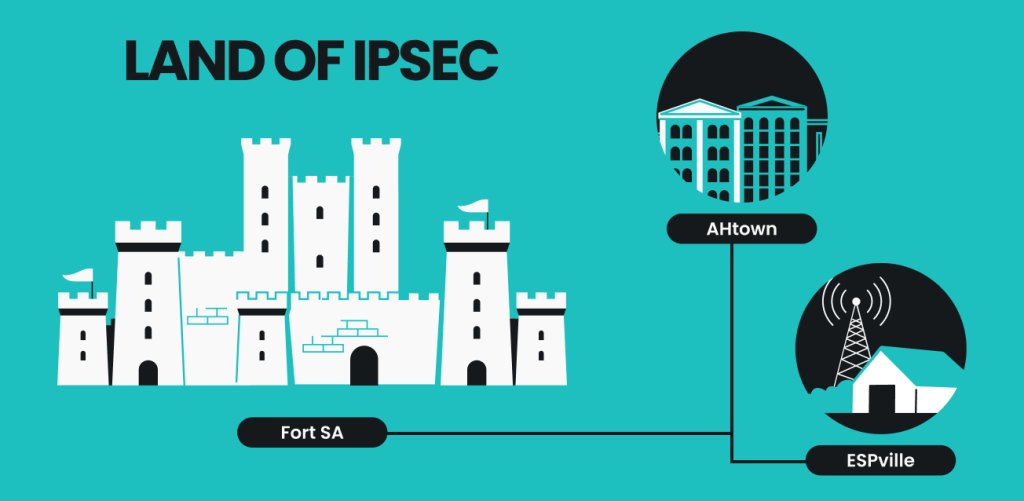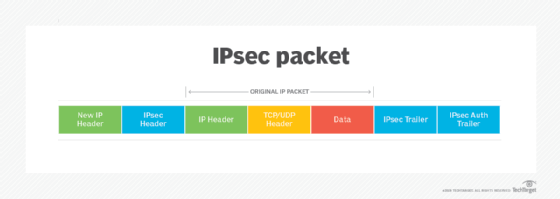Featured
Table of Contents
What Is An Ipsec Tunnel? An Inside Look
IPsec authenticates and encrypts data packages sent over both IPv4- and IPv6-based networks. IPsec procedure headers are found in the IP header of a packet and specify how the information in a package is handled, including its routing and delivery across a network. IPsec includes a number of elements to the IP header, including security info and several cryptographic algorithms.

ISAKMP is specified as part of the IKE protocol and RFC 7296. It is a structure for key facility, authentication and settlement of an SA for a safe and secure exchange of packages at the IP layer. To put it simply, ISAKMP defines the security criteria for how 2 systems, or hosts, interact with each other.
They are as follows: The IPsec procedure starts when a host system recognizes that a package requires defense and ought to be sent using IPsec policies. Such packets are considered "intriguing traffic" for IPsec functions, and they activate the security policies. For outbound packets, this implies the proper file encryption and authentication are applied.
What Is Ipsec?
In the second action, the hosts utilize IPsec to work out the set of policies they will utilize for a secured circuit. They also confirm themselves to each other and established a secure channel between them that is utilized to negotiate the method the IPsec circuit will encrypt or confirm information sent out across it.

After termination, the hosts deal with the personal secrets used during information transmission. A VPN essentially is a personal network carried out over a public network. Anyone who links to the VPN can access this personal network as if directly linked to it. VPNs are frequently used in organizations to make it possible for staff members to access their business network remotely.
Normally used between protected network entrances, IPsec tunnel mode enables hosts behind one of the entrances to interact firmly with hosts behind the other entrance. Any users of systems in a business branch office can firmly link with any systems in the primary workplace if the branch workplace and primary workplace have safe gateways to act as IPsec proxies for hosts within the respective offices.
Overview Of Ipsec
IPsec transportation mode is utilized in cases where one host needs to connect with another host. The 2 hosts negotiate the IPsec circuit straight with each other, and the circuit is generally torn down after the session is complete.
With an IPsec VPN, IP packages are protected as they travel to and from the IPsec gateway at the edge of a personal network and remote hosts and networks. An SSL VPN safeguards traffic as it moves in between remote users and an SSL gateway. IPsec VPNs support all IP-based applications, while SSL VPNs only support browser-based applications, though they can support other applications with custom advancement.
See what is finest for your organization and where one type works best over the other.
Ipsec Vpn In Details - Cyberbruharmy - Medium
Each IPsec endpoint validates the identity of the other endpoint it desires to communicate with, making sure that network traffic and data are just sent out to the desired and allowed endpoint. Despite its great energy, IPsec has a couple of issues worth mentioning. Direct end-to-end interaction (i. e., transmission method) is not constantly available.
The adoption of different local security regulations in massive distributed systems or inter-domain settings might position severe problems for end-to-end interaction. In this example, assume that FW1 requires to check traffic content to identify intrusions and that a policy is set at FW1 to reject all encrypted traffic so as to enforce its content examination requirements.
Users who use VPNs to from another location access a private business network are put on the network itself, offering them the very same rights and functional capabilities as a user who is connecting from within that network. An IPsec-based VPN might be created in a range of methods, depending on the needs of the user.
What Is Ipsec And How Does It Work?
Since these parts might stem from numerous providers, interoperability is a must. IPsec VPNs make it possible for smooth access to enterprise network resources, and users do not always require to utilize web access (gain access to can be non-web); it is therefore a solution for applications that require to automate interaction in both ways.
Its framework can support today's cryptographic algorithms in addition to more effective algorithms as they become offered in the future. IPsec is a compulsory element of Web Procedure Version 6 (IPv6), which companies are actively deploying within their networks, and is strongly advised for Internet Protocol Variation 4 (IPv4) applications.
It provides a transparent end-to-end safe channel for upper-layer procedures, and applications do not require modifications to those procedures or to applications. While having some downsides related to its intricacy, it is a fully grown procedure suite that supports a series of encryption and hashing algorithms and is highly scalable and interoperable.
What Is Internet Protocol Security (Ipsec)?
Like VPNs, there are lots of methods a No Trust design can be executed, but services like Twingate make the procedure substantially easier than having to wrangle an IPsec VPN. Contact Twingate today to read more.

IPsec isn't the most typical internet security protocol you'll utilize today, however it still has a vital role to play in protecting internet interactions. If you're utilizing IPsec today, it's most likely in the context of a virtual private network, or VPN. As its name implies, a VPN develops a network connection between 2 machines over the general public internet that's as protected (or practically as safe) as a connection within a private internal network: most likely a VPN's many popular usage case is to permit remote staff members to gain access to secured files behind a corporate firewall as if they were working in the office.
For many of this post, when we state VPN, we suggest an IPsec VPN, and over the next a number of areas, we'll describe how they work. A note on: If you're wanting to set up your firewall to enable an IPsec VPN connection, make certain to open UDP port 500 and IP ports 50 and 51.
Using Ipsec To Protect Data - Ncsc.gov.uk

As soon as this has actually all been set, the transport layer hands off the data to the network layer, which is primarily controlled by code operating on the routers and other parts that make up a network. These routers select the route private network packets require to their location, but the transport layer code at either end of the communication chain doesn't require to understand those information.
On its own, IP does not have any integrated security, which, as we noted, is why IPsec was established. IPsec was followed carefully by SSL/TLS TLS represents transport layer security, and it involves securing interaction at that layer. Today, TLS is developed into practically all web browsers and other internet-connected applications, and is sufficient security for everyday internet usage.
That's why an IPsec VPN can add another layer of protection: it involves securing the packages themselves. An IPsec VPN connection begins with establishment of a Security Association (SA) in between two interacting computers, or hosts. In basic, this includes the exchange of cryptographic keys that will permit the celebrations to encrypt and decrypt their interaction.
Latest Posts
Best Vpns For Remote Workers & Freelancers In 2023
Best Vpn Solution For Your Business
The Best Vpn For Business In 2023: Top 8 Corporate ...